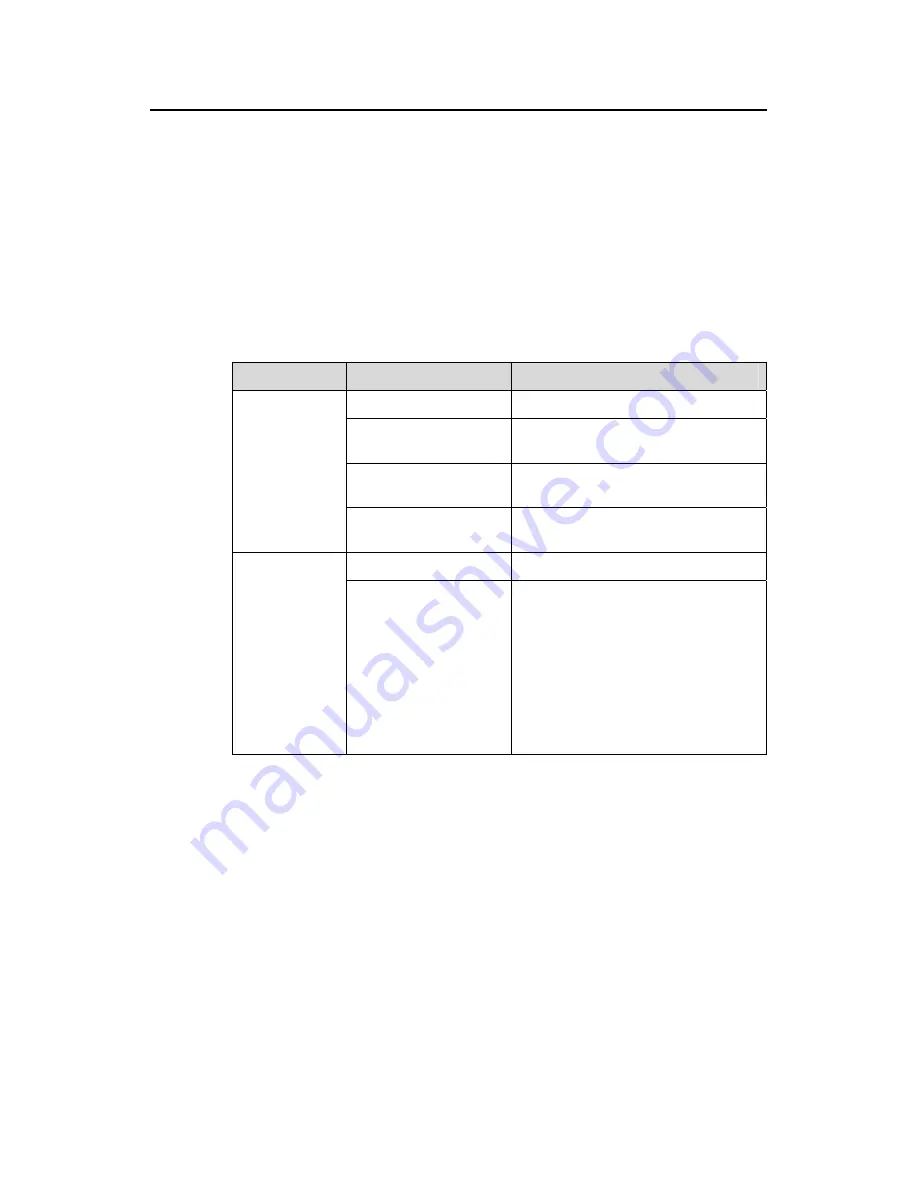
Installation Manual
H3C S9500 Series Routing Switches
Appendix B Engineering Labels for Cables
B-9
B.2 Engineering Labels for Ethernet Cables
These labels are affixed to the Ethernet cables that connect the boards in the frames, or
on the cables that connect HUBs and servers or agents of the Value Added Service
(VAS) products.
I. Meaning of the Label
Table B-2 shows the information on both sides of the labels affixed to the Ethernet
cables that connect the boards in the frames.
Table B-2
Information on labels affixed to the Ethernet cables
Content
Meaning
Example
MN: Cabinet number
For example, A01
B: Frame number
Numbered in top-down order with two
digits, for example, 01
C: Physical slot number
Numbered in top-down and left-right
order with two digits, for example, 01
MN-B-C-D
D: Ethernet port number
Numbered in top-down and left-right
order with two digits, for example, 01
MN: Cabinet number
For example, B02
MN-Z
Z: Location number
Valid location number of the terminal
device onsite. If the cable is connected
to a router in a cabinet, the serial
numbers of the cabinet, the frame and
the Ethernet interface of the router
should be specified, for example,
B02-03-12. If the cable is connected to
the Network Management Station
(NMS), specific location of the NMS
should be given.
In VAS products, the information provided on the labels is different, subject to different
devices that the Ethernet cables are connecting.
z
Labels for the Ethernet cable that connects the HUB and the server
1) The label on the HUB end should indicate the number of the frame and cabinet
where the HUB locates, and the serial number on the HUB.
2)
The label on the server end should indicate the number of the frame and cabinet
where the server locates. In case it is a stand-alone server, specific position of the
server should be provided.
z
Labels for the Ethernet cable that connects the HUB and the agent
3)
The label on the agent end should contain the serial number of the Ethernet port.
The definitions of the cabinet number and frame number are the same as those
described in Table B-2 above.











































